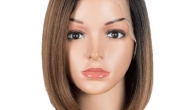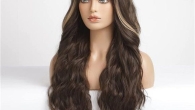
How Long Do Human Hair Wigs Last? A Comprehensive Guide
Human hair wigs offer a luxurious and natural look, making them a popular choice for those seeking versatility and style. However, like any investment, it’s essential to understand their longevity and how to maintain them to maximize their lifespan. This guide will provide detailed insights into how long human hair wigs last, factors affecting their durability, and tips for ensuring they remain in excellent condition for as long as possible.
Understanding the Lifespan of Human Hair Wigs
What Affects the Longevity of Human Hair Wigs?
Several factors influence how long a human hair wig can last, including:
- Quality of Hair: Higher-quality hair tends to last longer. Remy hair, for example, is known for its durability because the cuticles are kept intact.
- Construction of the Wig: The way a wig is made affects its lifespan. Wigs with hand-tied lace fronts or monofilament tops often last longer due to their more secure and breathable construction.
- Usage and Care: How often you wear and care for your wig plays a significant role in its longevity. Regular maintenance and gentle handling can extend its life.
Average Lifespan of Human Hair Wigs
Typically, human hair wigs can last anywhere from 6 months to 2 years. Here’s a breakdown:
- Daily Wear: If worn daily, expect the wig to last around 6 to 9 months.
- Occasional Wear: For occasional use, the wig can last up to 1 to 2 years or more.
- Proper Maintenance: With proper care, some high-quality wigs can last even longer.
Tips to Extend the Life of Your Human Hair Wig
1. Regular Cleaning and Conditioning
Proper cleaning and conditioning are crucial for maintaining your wig’s health. Follow these steps:

- Use Mild Shampoo: Wash your wig with a sulfate-free, mild shampoo to avoid stripping natural oils.
- Condition Regularly: Apply a conditioner specifically designed for human hair wigs to keep the hair moisturized and manageable.
2. Avoid Excessive Heat
Excessive heat can damage the hair fibers and reduce the wig’s lifespan. To protect your wig:
- Limit Heat Styling: Avoid frequent use of hair dryers, straighteners, and curling irons.
- Use Heat Protectants: If you must use heat styling tools, apply a heat protectant spray to shield the hair from damage.
3. Store Properly
How you store your wig can impact its longevity. Consider these tips:
- Use a Wig Stand: When not in use, place your wig on a wig stand to maintain its shape and prevent tangling.
- Store in a Cool, Dry Place: Avoid storing your wig in direct sunlight or humid environments, which can lead to damage.
4. Avoid Over-Washing
Over-washing can strip the hair of essential oils and cause it to become brittle. To avoid this:
- Wash Sparingly: Only wash your wig when necessary, typically after 10-12 wears or when it becomes visibly dirty.
- Rinse Gently: When washing, gently rinse the wig in cool water to avoid agitation.
Professional Maintenance and Repair
1. Seek Professional Help
For issues that require expert attention:
- Professional Cleaning: Consider having your wig professionally cleaned and conditioned periodically.
- Repairs: If the wig shows signs of wear or damage, a professional can help with repairs or recommend solutions.
2. Replacing Parts
Some components of the wig may wear out before the rest of the hair:
- Straps and Clips: Replace worn-out straps or clips to ensure a secure fit and prevent additional stress on the wig.
- Lace Fronts: If the lace front becomes damaged, it can be replaced or repaired by a specialist.
Choosing High-Quality Human Hair Wigs
1. Check Hair Origin
The origin of the hair can impact its quality and durability:
- Remy Hair: This type of hair is collected with the cuticles intact, making it more durable and natural-looking.
- Non-Remy Hair: While often more affordable, non-Remy hair may not last as long due to the lack of cuticle alignment.
2. Evaluate Wig Construction
The construction quality of the wig is crucial for longevity:
- Hand-Tied Wigs: These wigs often last longer due to their superior craftsmanship and flexibility.
- Machine-Made Wigs: While generally more affordable, machine-made wigs may not offer the same level of durability.

Common Myths About Human Hair Wigs
1. “Human Hair Wigs Last Forever”
While human hair wigs are durable, they do not last forever. Proper care and maintenance can significantly extend their lifespan, but all wigs will eventually show signs of wear.
2. “Higher Price Equals Better Quality”
Price can be an indicator of quality, but it’s not the only factor. Assess the hair origin, wig construction, and reviews to determine the overall quality.
Choosing the Right Wig for Your Needs
1. Consider Your Lifestyle
When selecting a human hair wig, think about how it fits into your daily life. If you:
- Lead an Active Lifestyle: Opt for a wig with a secure fit and durable construction that can handle frequent wear and movement.
- Have a Busy Schedule: Choose a wig that requires minimal maintenance, such as those with easy-to-style hair textures.
2. Evaluate Wig Styles
Different styles can affect the wig’s longevity and maintenance needs:
- Straight Wigs: Generally easier to maintain, but may show signs of wear sooner if not cared for properly.
- Curly Wigs: May require more upkeep to maintain their shape and avoid frizz, but can offer a long-lasting, voluminous look.
Environmental Factors Impacting Wig Longevity
1. Sun Exposure
Extended exposure to sunlight can cause color fading and damage:
- Use UV Protectants: Some products are designed to protect hair from UV rays.
- Store in the Shade: Keep your wig away from direct sunlight when not in use.
2. Humidity and Moisture
Excess moisture can lead to tangling and frizz:
- Avoid Humid Areas: Try to avoid wearing your wig in extremely humid conditions.
- Dry Thoroughly: Ensure your wig is completely dry before storing it to prevent mold and mildew.
Repairing and Revamping Your Wig
1. Re-Styling
Changing the style of your wig can refresh its appearance:
- Professional Styling: Consider having your wig professionally styled to maintain its look and avoid damage from DIY attempts.
- DIY Options: If you’re comfortable, you can experiment with new styles at home, but always use recommended tools and techniques.
2. Color Touch-Ups
If your wig’s color starts to fade, you can:
- Use Temporary Dyes: Apply temporary hair color products designed for wigs to refresh the hue.
- Seek Professional Coloring: For more permanent solutions, consult a professional colorist experienced with wigs.
Signs It’s Time to Replace Your Wig
1. Noticeable Damage
- Fraying Edges: If the wig’s edges start to fray or show wear, it may be time for a replacement.
- Excessive Tangling: Persistent tangling despite proper care can indicate the wig is nearing the end of its lifespan.
2. Loss of Structure
- Shape Loss: If the wig no longer maintains its original shape or volume, consider a new one.
- Fit Issues: A decrease in fit or comfort can signal that it’s time for an update.

Trends and Innovations in Human Hair Wigs
1. Advances in Wig Technology
Recent innovations have enhanced the durability and comfort of human hair wigs. Some notable trends include:
- Heat-Resistant Fibers: New heat-resistant materials allow wigs to withstand higher temperatures, making them more versatile for styling.
- Lightweight Construction: Advances in wig construction techniques have led to lighter, more breathable wigs that offer greater comfort.
2. Customizable Options
Customization options are becoming more prevalent, allowing for a more personalized experience:
- Custom Color Matching: Many companies offer custom coloring services to perfectly match your natural hair color or desired shade.
- Personalized Fit: Custom-made wigs ensure a precise fit, addressing common issues such as slippage and discomfort.
Conclusion
Choosing a human hair wig that suits your needs and maintaining it properly are key to ensuring it lasts as long as possible. By understanding the factors that influence wig longevity, following essential care tips, and knowing when to replace your wig, you can enjoy a natural look and reliable performance for an extended period. Whether you wear your wig daily or on special occasions, proper maintenance will help you get the most out of your investment.












Leave a Reply